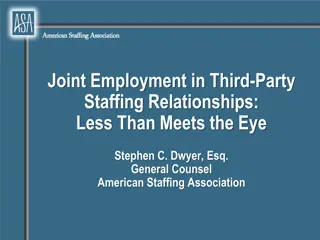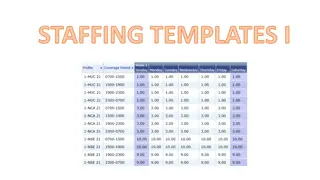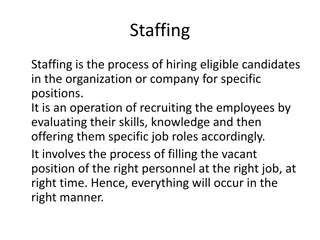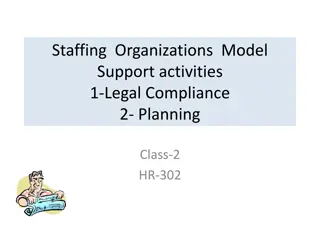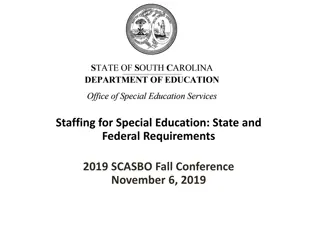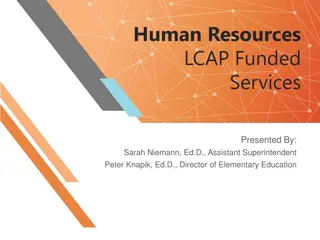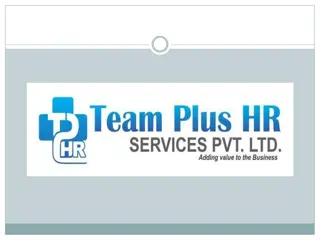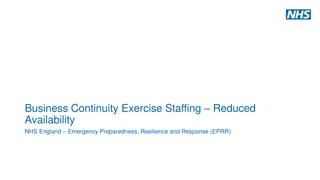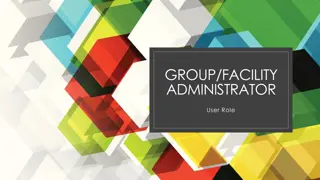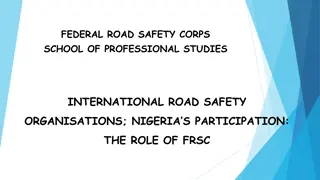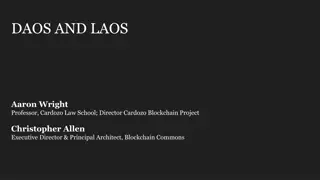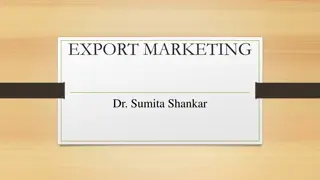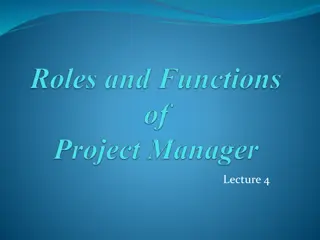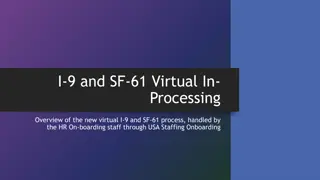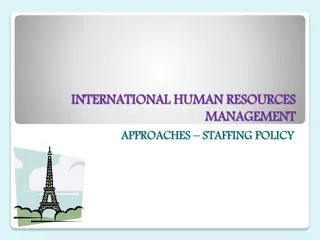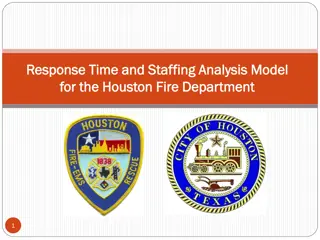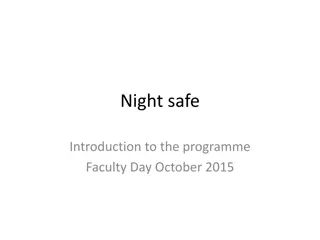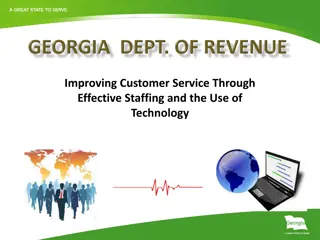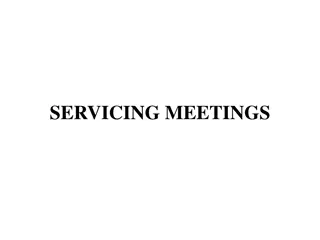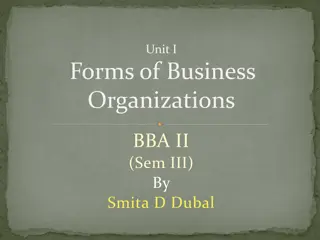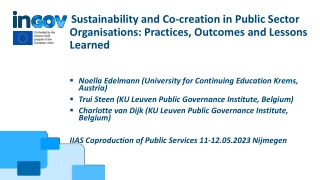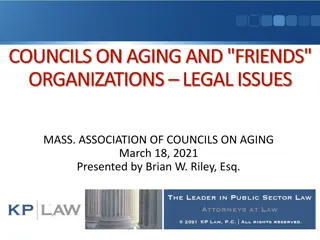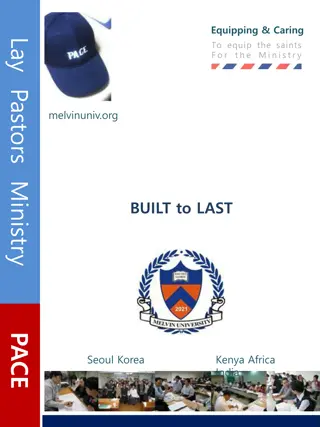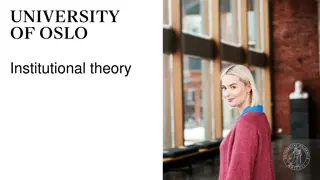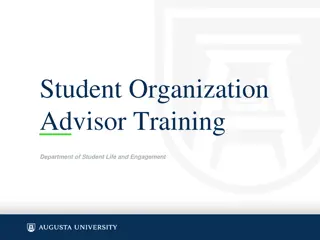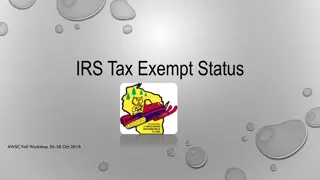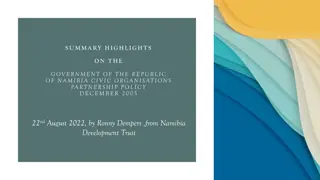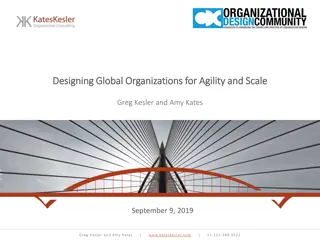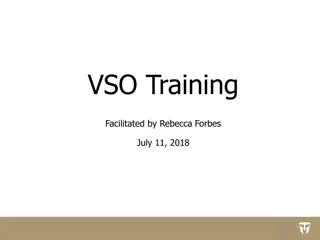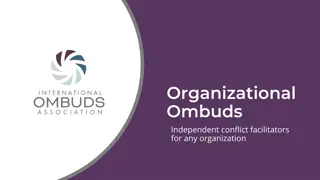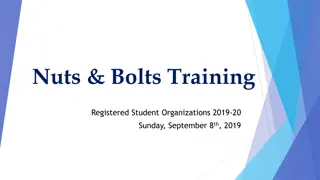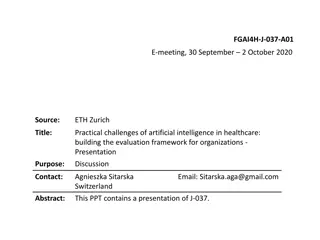Understanding the Importance of Staffing in Organizations
Staffing is a crucial managerial function that involves employing and developing human resources to execute various activities within an organization. It encompasses manpower planning, recruitment, selection, training, development, remuneration, performance appraisal, and more. Effective staffing ensures the right people are in the right positions at the right time, contributing to the organization's success and growth.
Uploaded on Sep 23, 2024 | 0 Views
Download Presentation

Please find below an Image/Link to download the presentation.
The content on the website is provided AS IS for your information and personal use only. It may not be sold, licensed, or shared on other websites without obtaining consent from the author. Download presentation by click this link. If you encounter any issues during the download, it is possible that the publisher has removed the file from their server.
E N D
Presentation Transcript
Staffing Staffing Chapter outline 1. Meaning and definition 2. Importance 3. Staff selection process 4. Training and development 5. Methods of training and development Prepared By Dr. S. Gunakar Department of Commerce Pompei College, Aikala
Meaning: Staffing is a managerial function of employing and developing human resources for carrying out the various managerial and non- managerial activities in the organization. The staffing function includes- 1. Manpower- human resources planning 2. Recruitment 3. Selection 4. Placement 5. Training & development 6. Remuneration 7. Performance appraisal 8. Promotion 10. Transfer
Definitions: Koonz,ODonnel &Weigh Staffing is defined as filling positions in the organization structure through identifying work force requirements, inventorying available , recruitment, ,promotion, appraisal ,compensation, & training of needed people . Datton Mc Farland Staffing is the function by which managers build an organization through the recruitment ,selection and development of individuals as capable employees . From the above definitions it is clear that staffing is a function which involves planning, recruitment, selection, training &development of people to fill various positions in an organization. the people selection ,placement
Features of staffing: 1.Staffing is concerned with people: Managerial functions like p , o, c etc.may be performed mechanically. But the staffing function is difficult to perform because it involves people. 2. A continuous activity: Organization s need to retain &maintain its personnel is a never ending process .It is not one-shot deal. 3. A logical process: Staffing function has many stages. All the stages are to be followed in a sequential manner. It starts with identification of manpower requirements. The other processes are recruitment, selection, induction, training, development & maintenance. 4.Staffing deals with both current &future personnel requirements. 5. The staffing functions are handled by personnel manager or human resource management department. 6. Staffing aims at selection of right people for right positions at right time. 7. Staffing involves development of future managers.
Need and importance of staffing: 1. Life and action: It is the staffing function which injects life and action into the organization and makes its functioning possible. 2. Strength and capacity: An organization is strong to the extent that its members are strong in their abilities, skills and efforts to do things and to get things done. 3. Sound organization: The staffing function taken care of the need for building a sound organization. 4. Advanced technology: In order to make use of the latest technology, the appointment of right type of persons is necessary. The personnel can be fitted into new jobs properly only if the management performs its staffing function satisfactorily.
5. Increasing size of organization: In a large organization there are several positions. Systematic programmes for the selection training and appraisal of employee are required efficient functioning of an enterprise. This has increased the significance of staffing. 6. Long-range need for manpower: In order to execute the long-term plans, management must determine the manpower requirement well in advance. The need for staffing is increasing due to shortage of good managerial talent and high rate of labour turnover. 7. High wage bill: Personnel cost is a major portion of operating costs today. If right type of people are selected and trained, optimum results from recruitment selection and training. management the expenses incurred on can obtain
8. Human relations movement: By staffing function, the management can show the significance it attaches to the manpower working in the enterprise. 9. Optimum utilization of human resources: Staffing facilitates optimum utilization of human resources and minimization of cost of manpower. 10. Job satisfaction: Staffing improves job satisfaction and morale through objective Compensation for their contributions. of employees and assessment fair
The staffing process: Staffing viewed as a process consisting of certain well recognized activities. These activities include a. Manpower Planning b. Recruitment c. Selection d. Placement and Orientation e. Training and Development f. Performance appraisal, Transfers, Demotion and Separations. When all these elements are arranged sequentially, they may be regarded as the steps or phases of the staffing process.
RECRUITMENT: Recruitment identifying the sources from where the personnel can be employed and encouraging them to apply for jobs in the organization. The purpose of recruitment is to get as many potentially suitable applicants as possible in order to have wide choice for the organization. Sources of Recruitment: There are two sources of recruitment 1. Internal 2. External Internal sources: Internal sources of recruitment consist of personnel already working in the organization. Mot organization fill job vacancies through promotions and transfer of existing staff. is the process concerned with
In the external sources of recruitment a vast mass of skilled, semi skilled and unskilled people are recruited from the outside of the organization. Advantages of Internal recruitment offers the following advantages. a. Familiarity with own employees: The organization has more knowledge and familiarity with the strengths and weakness of its own employee than of unknown outsiders. b. Better use of the talents: The policy of internal recruitment provides opportunity to the organization to make a better use of the talents internally available and to develop them further. C. Inexpensive Recruitment: inexpensive. The organization does not have to spend much efforts, time and money to locate possible candidates and to attract their applications Internal recruitment is
d. Improve the morale: In this process employees are sure that they would be preferred over the outside competitors. This feeling helps in boosting the morale of the employees. e. A Source of motivation: The opportunity of promotion implicit in internal recruitment is a source of motivation for employee to improve their career and income levels. Limitations: 1. Restricts the option: It restricts the option of the organization for tapping the talent available in the vast outside employment market. Internal recruitment means in breeding which is not healthy for the future of the organization. It prevents infusion of new blood into the organization.
2. Lack of availability of suitable candidate: Suitable candidate may not be available internally. In such situation the organization may have to compromise its quality recruitment for the jobs positions by taking mediocre people from within. 3. Discourage competition: In this process internal candidates are protected from the element of competition from outside candidates. 4. Create controversies: Conflicts and controversies are likely to arise among the internal employees who desire promotion whether or not they deserve it. 5. Stagnation of skills: In the long run the skill of internal employees may become stagnant or obsolete which decreases the productivity and efficiency of the organization.
External sources The main sources of external recruitment are Advertising is news papers and journals Public employment agencies set up by the government Private employment agencies Labour unions Educational institutions Professional associations Leasing Former employees Gate hiring- selecting people who approach on their own for employment in the organization
Advantages 1 Wide choice: The enterprise can choose the best personnel from among applicants. 2. Availability of talented organization can expect to get talented candidates from outside. 3. Opportunity to select the best candidates: The organization can pick up the best candidate for the jobs. 4.Useful to fill up managerial positions which require technical and professional qualifications. a large number of candidates: The
DEMERITS: 1. Expensive &time consuming 2.Generates feeling of discontent &frustration among existing employees. 3. Candidate chosen from outside may fail to adjust themselves to new environment. They may be irritated, quarrelsome or suspicious. They may have to be terminal &replaced.
SELECTION: Meaning: Selection is the process of choosing the most suitable candidates from applicants for the various jobs. It follows recruitment. It divides the candidates for employment in to two categories- namely those who will be offered employment and those who will not be. Negative process because it involves rejection of unsuitable candidates. objective of selection is to appoint those individuals who are employment and place them in jobs for which they are suited. best qualified for
Stages in selection procedure: There are no standard procedures to select different types of employees or to be adopted by all concerns. In practice, selection procedure differs from job to job and from organization to organization. In some cases, selection is a very simple and one-step process. But in many cases, it is quite complex and time consuming. The main steps are- Preliminary interview. Application blank. Selection tests. Reference checking. Physical examination. Interview. Final selection and job offer
Preliminary interview: This is done to eliminate the totally unsuitable candidates and to reduce selection. It is generally brief and may take place across the counter in the employment office of the company. In this process, applicant is informed about the qualifications, work experience, age etc required by a candidate, conditions under which worker has to work. Questions will be on salary expected; willingness willingness to work in night shift etc, candidates who pass preliminary interview will be given blank application form to fill up. overall cost of nature of the post, to work over time,
2. Application blank: The application blank is a personal history questionnaire to be written by applicants in their own handwriting. Application form contains information regarding (a) personal history- name, date of birth, sex, marital status, nationality etc. of the candidate (b) educational qualifications (c) job experience (d) references (e) salary expected.etc. The applications of candidates provide the basis for examination of their suitability. During the course of scrutinizing applications with inaccurate information will be rejected. Applicants who have provided all required information in the application from are called for written and psychological tests. further analysis and
3. Selection Tests: Test is a means of evaluating applicants knowledge, skills, experience, attitudes, and personality and so on. There are several types of tests which are used for screening applicants. They include: (a)Intelligent tests: These tests are used to assess the candidate s mental capacity to grasp quickly, speed of thought, ability to see relationships and reason logically. They measure the alertness and creativity of applicants. The level of intelligence is measured in terms of intelligent quotient (I. Q). An intelligence test generally includes verbal comprehension, word fluency, memory, inductive reasoning etc. (b)Aptitude (Natural abilities or skill tests: Aptitude means potential which an individual has for learning the skills required to do a job efficiently. Aptitude tests are used to measure a candidate s capacity and bent of mind to acquire necessary skills in future. at doing something)
(c)Proficiency (Able to do something well because of training and practice) tests: These tests are designed to measure the skills and abilities which a candidate already possesses. These tests are also known as performance, achievement or trade tests. (d)Interest tests: The purpose of these tests is to measure a candidate s interest (like & dislike) in a particular kind of work. Such tests identify the areas in which the individuals show special concern, fascination & involvement. (e) Personality tests: Personality implies the totally of an individual s emotional and behavioural set up. Personality tests are used to measure an individual s value system, relative modes, emotional maturity, courage, initiative etc. Their object is to measure temperamental and emotional make-up is suitable to the job requirements. that the candidate s
f) Achievement tests: These are conducted to measure a person s potential in a given area. This test is conducted after the special training to know how much work he has learnt. g) Psychomotor or psychometric tests (used to measure mental abilities and processes) : These tests are used to measure a person s strength, dexterity( skill in using your hands or mind) and co-ordination. 4. Reference checking: Applicants may be requested to give the references in application form or to provide letters of recommendations. The usual referees may be previous employers or teacher of the candidate or other persons of prominence who may be aware of the candidate s behaviour and ability. Checking the references may help to point out discrepancies regarding the candidate s previous employment, past salary and reasons for leaving the job. In our country, references are not given adequate importance because or their biasness.
5. Interview: It is a face to face talk between the employer (panel of selectors) and the candidate. Interview enables the selector to get a first hand idea of the candidate s personality, their poises and poses, their communication, other related skills and their general behavior. interviewers ask several searching questions to elicit their responses and to evaluate them. interviewed either individually or in groups. The different kinds of interviews are: Preliminary interview Stress interview Depth interview Direct planned interview Non-directive interview Patterned interview. The Candidates may be
6.Physical Examination: If a candidate is successful in the interview, he is called for Physical and medical examination. It is done to ascertain his physical fitness for the job. For this purpose, candidate is sent to factory physician for medical checkup. 7.Final Selection and job offer: After getting physical fitness certificate physician, a list of suitable candidate is prepared .The list is sent to the line manager for approval. The candidates formally approved by the manager concerned are appointed by issuing appointment letters .Generally, the candidates are appointed on probation for one or two years .During this period, they are observed keenly, and when they complete this period successfully, they become the permanent employees of the organization from the factory
1. DIRECTED INTERVIEW: It is straightforward, face to face question answer session between the interviewer and the candidate. Under it a list of questions related to the job is prepared in advance. Standard answers to these questions are also determined beforehand. The questions are put to the candidate and answers given by them are recorded. These answers are compared with standard answers to decide the candidates suitability for the job. Directed or structured interview helps to measure job knowledge, attitudes and personal characteristics. However, it cannot provide an in-depth analysis of a candidates personality and attitudes
2.DEPTH INTERVIEWS: Under it no direct or straight questions are asked. The candidate is encouraged to express his views on a specific topic. The interviewer puts a minimum of constraints on the applicant. He plays mainly a listening role. The method used conversational so that the candidate feels at ease. As a result more thorough assessment of his personality can be made. The interviewer must be an experienced and complete man. is informal and
3.PATTERNED INTERVIEW: It is an combination of directed and non-directed interviews. In this type of interviews standard procedure are used in recording, analyzing observations made by a candidate. It yields more comparable results. 4.STRESS INTERVIEW: conducted to judge how an applicant acts in a stress situation. Frequent interruptions, criticisms of the candidates opinions, keeping silent for extended period of time are the main methods of creating stress Other methods: 1. Board or panel interview 2. Group interview and interpreting the This interview is
Training and Development Meaning: Training is an organised process for increasing the knowledge and skills of people for doing a particular job. It is the process of helping employees to acquire more knowledge of the job and to learn or sharpen the needed skills, attitudes and values associated with efficient performance of their job. According to Flippo, Training is the act of increasing the knowledge and skills of an employee for doing a particular job. Training as a part of staffing is done to aid employees in improving performance. It is a continuous process and should be managed by experts.
Training Vs. Development: Training is the process by which attitudes, skills, and abilities of employees increased to perfrom specific job. So it has a specific purpose. Development means growth of individuals in all respects. It focuses on the general improvement of overall personality of the employee. The tem training is used with reference to non- managerial employees and workers. But the term development is reserved managers and executives. with reference to
Purpose/Need/Importance/advantages/Role of training and development: Reduces learning time to reach acceptable perfromance: Training to new employees who are often raw hands and existing employees makes them well-versed in the complexities of their jobs. Provides skills to exisitng employees: Training is needed to existing employees to gain more job knowdege and skills. Provides the knowledge development: Training is used to impart new skills and techniques to perform the jobs in newer ways which emerge as a result of tehnological development. Prepares employees for their promotion: Training is also essential to prepare employees for their promotion and for assuming higher job responsibilities. of new technological
Improves the attitudes and behaviour of the employees: Training is useful in orientation and re-orientation of employees with jobs and with their work environment and in the matters of discipline, regular attendance, good relations with superiors and co-employees, careful use of equipment, materials facilities and so on. Increases productivity: An increase in skills helps increase in quantity and quality of output. Other benefits are: It broadens the perspective and problem solving abilities of the employees It makes the employees more competent, confident and adaptive to cope with the complex and changing conditions of their work environment. Aid in solving operational problems.
Fill manpower needs. Helps in reducing employees absentesim and turnover Trained people need less supervision. They become capable of self-direction and self control. It enriches quality of peronnel and the quality of working life. It improves their level of motivation and job satisfaction.
Methods of Training and Development: methods of training and development are divided into two types: On the job methods Off the job methods 1. On the job methods: Under this method, the worker is given training at his work place by the experienced workers, first line supervisors, instructors. It involves learning by doing. learns while he is actually engaged in doing a job. Under this method the following methods may be included. A. Coaching: Under this method senior plays the role of guide and instructor of management provides personal instruction demonstrates the task operations and answers queries. The various specially qualified The trainee trainee. guidance. He He and
A. Coaching: Under this method senior plays the role of guide and instructor of management trainee. He provides personal instruction and guidance. task operations and answers queries. B. Job rotation: Under this method an employee is shifted from one job to another within the department. It broadens the background of the trainee in various positions. method is also known as Cross Training . C. Apprenticeship: Apprenticeship training is frequently used to train personnel in some skilled trades, crafts and technical fields. This is a kind of earn and learn method of training. In India, the Apprentices Act, 1961 (amended in 1973) makes it obligatory on the part of employers to place appreentices in the designated trades in terms of standard laid down. During the training period each trainee is paid certain amount of stipend as stipulated in the Act. There is no guarantee that trainee will be absorbed in the factory after the completion of training. He demonstrates the This
D.Internship training: Internship training is a joint training programme of technical institutions or colleges and business houses. In this case, student knowledge in the educational institutions and practical experience in industries. E. Vestibule training: In vestibule training the equipment and procedures similar to those used in actual job are set up in a special working area known as vestibule school. The trainee is taught in this workshop (school). After getting training in this school the trainee is put on other similar jobs in the factory. F) gets theoretical
Under study: This is a method adopted for specific individuals who are designated to take over certain job responsibilities from those who are to retire shortly or otherwise leave the organisation. G) Temporary promotion: In this method, trainee is appointed as acting manager when the manager is on long leave or when the post of manager is vacant. Temporary promotion helps to develop future managers and is a convenient method of executive development. H) Membership in committees: In this case the trainee is nominated to become the member of committees and interacts with experienced managers and senior executives. This provides them an opportunity for the development of communication and interpersonal skills. The trainee may be asked to submit the reports to the committee to demonstrate the analytical and conceptual abilities.
I)General education programmes: Here organisation may conduct general education programmes like guest lecture. This is a kind of class room teaching. 2. Off- the-job training methods: Under this method training is imparted at places away from the atmosphere of the work place. The main advantage of off-the job training is that it helps trainees to learn things in a steady and systematic manner without any job pressure. The focus is more on learning than doing. The important off the job training methods are: 1) Sensitivity training: the objective of sensitivity training is the development of awareness and sensitivity of behavioural patterns of oneself and others. Sensitivity training is given to small groups of people from the same organisation. A trainer will be present in the session which begins without any agenda. The trainer functions as a catalyst or facilitator. He induces interactions among members who are allowed to express their views on one another about attitudes, behaviours, mannerisms, pitfalls and so on. It makes the trainees to understand their own behaviours, self-awareness and problem solving skills among them. This is also known as T- group training. The duration of T- groups sessions ranges from a few days to few weeks and the sessions are held outside the organizational work setting.
2. Simulation:This method involves the duplication of organisational situations in learning environment. It is a mock-up of real thing. Role playing, business games and in-basket techniques are some of the simulation methods. In role playing, the trainees are assigned different roles in a case study and expected to play the roles. A business game is a class room exercise in which teams of students compete against each other to achieve common objectives. The trainees are asked to make decisions about production development, inventories, sales etc. for a simulated organisation. Since they are often divided into teams as competing companies, experience is also obtained in team-work cost, research and
In, in basket method trainees are given background information about a simulated company, its products, key personnel, various memoranda and all data of the firm. The trainee has to understand all this, make notes, delegate tasks and prepare memos within a specified amount of time. develops the abilities of willingness to make decision and take decision. Lectures and courses: The trainees are provided with oral instruction on concepts, principles, processes and practices, supported by relevant material and readings. assignments to test their acquisition of knowledge. This type of courses are organised in India by Administrative Staff College of India, National Productivity Council, Management Association etc. This kind of exercise The trainees are given
4.Conferences and discussions: Seminars, workshops and similar interaction sessions belong to this category. permits multilateral communications feedback of ideas and experience, broadening of knowledge and insights and so on. discussions needed to be guided and moderated by competent trainers. 5.Case studies: In this method trainees are given the case of a real situation, to analyse, identify the problem and suggest solutions. This type of training aims at conceptual, problem solving and judgmental skills of personnel. 6.Transactional analysis: It is a technique of training developed by Eric Berne and popularised by Thomas Harris of U. S. It is a tool of improving human relations and interactions and of promoting rational, mature behaviours among superiors, subordinates and peers in an organisation. It exchange and Conferences and
7.University development programmes: Here, organisation send selected employees to university sponsored management development programmes. sponsored management


